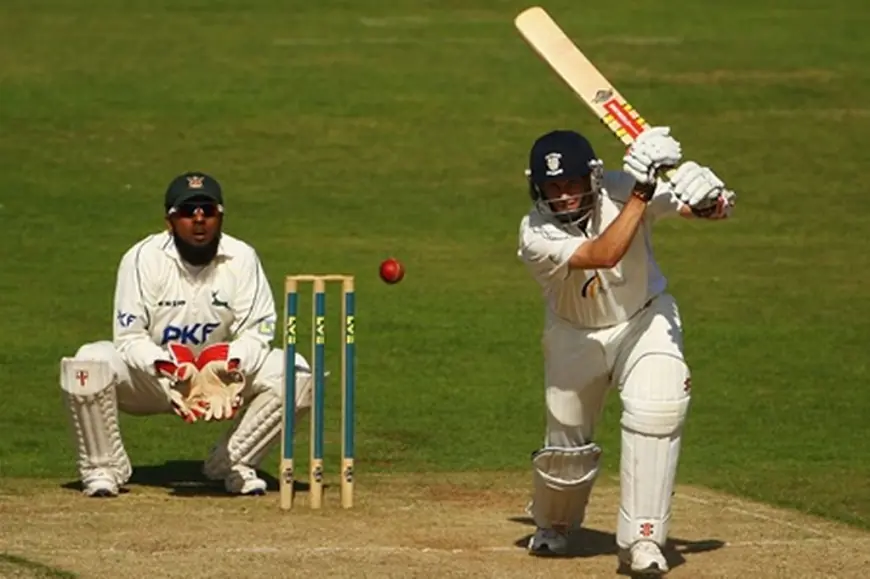Power Play: A Statistical Review of International Cricket

Cricket has long held a special place in the hearts of millions around the world. From dusty village pitches in the subcontinent to high-tech stadiums in Australia and England, the sport continues to evolve with time. What once began as a leisurely, aristocratic pastime is now a global phenomenon—a game of numbers, strategy, and raw passion. In this article, we delve into the statistical landscape of international cricket and analyze how formats, players, and performances have shaped the modern narrative of the sport.
The Rise of Limited-Overs Formats
While Test cricket still stands as the traditional and most respected form, the rise of One Day Internationals (ODIs) and Twenty20 (T20) has revolutionized the statistical profile of the game. In ODIs, batting averages tend to hover in the mid-30s for elite players, while bowlers target an economy rate under 5.0. In contrast, T20 cricket places extreme pressure on both sides—batters are expected to maintain strike rates above 130, and bowlers are praised for conceding anything below 8 runs per over.
This shift in statistical norms reflects how the game has adapted to audience demand. Fast-paced entertainment has taken center stage, drawing massive online viewership through Cricket Streams, particularly on platforms like Totalsportek, which offer live access to global matches for fans across continents.
Batting Benchmarks and Evolution
Historically, legends like Don Bradman set impossible standards, with a Test average of 99.94. In the modern era, players like Virat Kohli, Steve Smith, Joe Root, and Babar Azam have carved their own legacy with averages around the 50-mark in Tests and ODIs. In T20Is, while averages are less indicative due to the high-risk style of play, strike rates and consistency play a more significant role.
Let’s consider T20 batting trends. In 2007, the average T20I team score was around 140. By 2024, that figure has consistently crossed the 170-mark. Power hitting, innovation, and the rise of finishers like Glenn Maxwell and Andre Russell have transformed what defines a ‘winning total.’
The ability to stream these innings in real-time via Cricket Streams on Totalsportek has also allowed fans to experience cricket beyond just scores—watching technique, pressure handling, and game-changing moments live as they unfold.
Bowling Dynamics in a Batter-Friendly Era
Bowling, once the dominant force in the early days of cricket, has faced new challenges in the shorter formats. Flat pitches, shorter boundaries, and heavier bats have tilted the game toward batsmen. Yet, bowlers have responded with skill and innovation.
In ODIs and T20s, the death overs (last 10 in ODIs, last 4 in T20s) are crucial. Bowlers like Jasprit Bumrah, Mitchell Starc, and Shaheen Afridi have adapted by mastering yorkers, slower balls, and deceptive bouncers. Their effectiveness is not just judged by wickets taken but also by economy rates under pressure.
Data shows that a good death-over bowler concedes under 9 runs per over in T20s. Top pacers now rely heavily on match analysis, using statistical breakdowns of batsmen’s weaknesses—something that wasn't possible a decade ago. This access to detailed stats and live Cricket Streams on Totalsportek provides even casual fans with a deeper understanding of the game's nuances.
Fielding: The Unsung Metric
While batting and bowling dominate the scorecards, fielding is an area where statistics are increasingly telling. Metrics like run-saving efficiency, boundary-saving dives, and direct hit success rates have become part of team analysis.
Players like Ravindra Jadeja, Ben Stokes, and Glenn Phillips have raised fielding standards. In fact, in modern T20 cricket, one run saved can often be more valuable than one run scored. Statistical models now account for this, giving players ratings that combine catches taken, runs saved, and errors made.
Cricket Streams on Totalsportek allow viewers to catch these brilliant moments—whether it's a gravity-defying catch at the boundary or a sharp run-out—that often shift the game's momentum more than any single boundary.
Captaincy in Numbers
Leadership in cricket is more than just tactics—it's about reading conditions, rotating bowlers, and making critical decisions under pressure. Statistically, captains are now assessed not only by win/loss ratios but also by decision-making patterns, such as bowling changes, use of the DRS (Decision Review System), and field placements.
MS Dhoni, Eoin Morgan, and now Rohit Sharma have shown how analytical thinking combined with instinct can lead to team success. Advanced metrics track captaincy trends across formats, and these insights are often discussed during Cricket Streams commentary on Totalsportek, enriching the viewing experience with behind-the-scenes strategies.
Format-Wise Statistical Contrasts
Let’s compare how stats differ across formats:
-
Test Cricket: Average scores per innings hover around 250–350. Bowlers with averages under 25 are elite. Batting centuries are relatively rare but deeply valued.
-
ODIs: Average innings totals are now closer to 300. Batters with strike rates above 90 are considered aggressive, and bowlers aim to keep economy under 5.5.
-
T20Is: Teams target 180+ scores. Bowlers often sacrifice wickets for dot balls, and dot-ball percentages are a key metric. Batters are judged by their ability to finish games, not just accumulate runs.
Watching how these formats differ live through Cricket Streams on Totalsportek allows fans to appreciate the skills each format demands.
Emerging Trends and Data-Driven Decisions
One of the most impactful evolutions in cricket is the rise of analytics. Teams now use AI-driven tools and real-time data feeds to strategize. Bowlers know which delivery to use against a specific batsman, and fielders are positioned based on heat maps of shot tendencies.
Franchises in leagues like the IPL or BBL use player efficiency scores and workload data to manage athlete fitness and optimize match-day decisions. This shift toward data-centric strategy is reflected in player selection, match tactics, and post-game reviews.
As fans tune into Cricket Streams via Totalsportek, they’re often treated to overlays of data visuals—wagon wheels, pitch maps, and predictive scores—that add depth and excitement to the match.
The Global Reach of the Game
Cricket’s statistical impact isn’t confined to elite nations. Associate countries like Afghanistan, Ireland, and the Netherlands have produced players with world-class numbers. Rashid Khan, for example, boasts an extraordinary economy rate in T20s while maintaining a high strike rate with the ball.
Such global competitiveness has been amplified by Cricket Streams available on platforms like Totalsportek, giving emerging talents the visibility they deserve.
Conclusion: The Numbers Don’t Lie
The game of cricket continues to evolve, and with it, the statistics that define its legends and turning points. Numbers help tell the story behind every cover drive, every yorker, and every stunning catch. As formats expand and the audience grows, statistics will only play a greater role in shaping how we understand and appreciate the game.
Platforms like Totalsportek, with their seamless Cricket Streams, bridge the gap between raw action and insightful analysis. They not only let fans witness great performances but also offer the tools to understand why those performances matter.
Whether you're a casual viewer or a hardcore analyst, the power of numbers is undeniable in cricket. And in this modern era, the ability to follow those numbers live—thanks to Cricket Streams—has made the sport more accessible, engaging, and global than ever before.
What's Your Reaction?
 Like
0
Like
0
 Dislike
0
Dislike
0
 Love
0
Love
0
 Funny
0
Funny
0
 Angry
0
Angry
0
 Sad
0
Sad
0
 Wow
0
Wow
0

















































